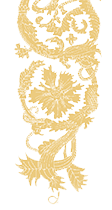Regency Chinoiserie Table Cabinet
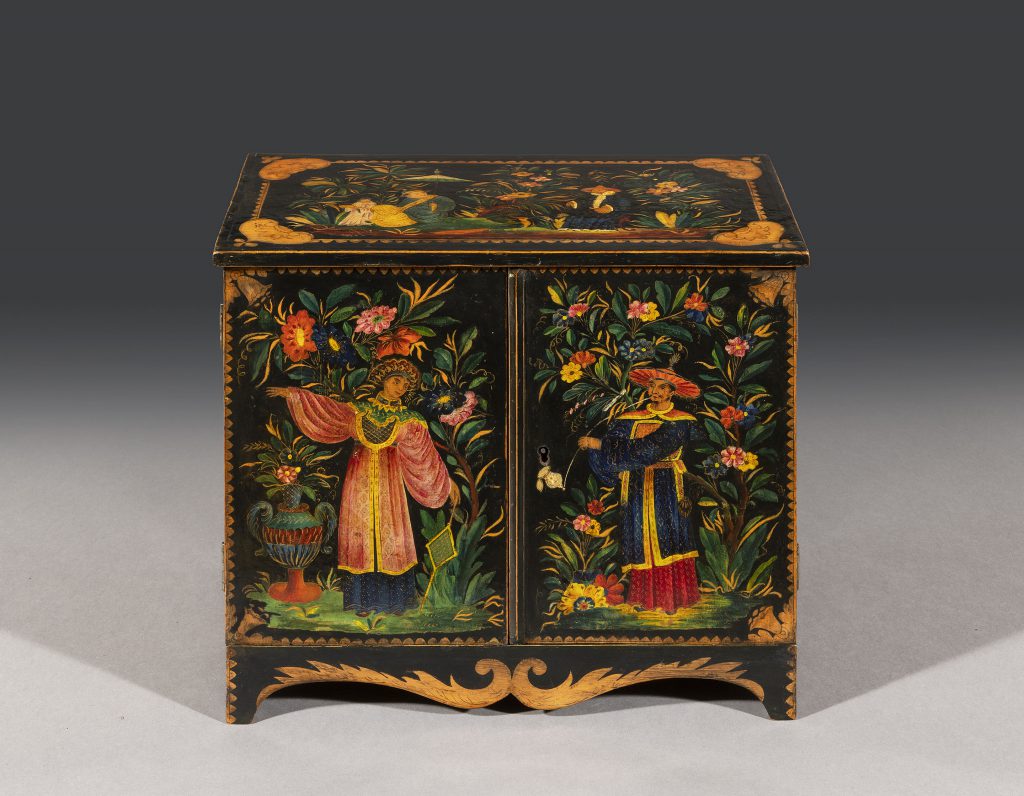
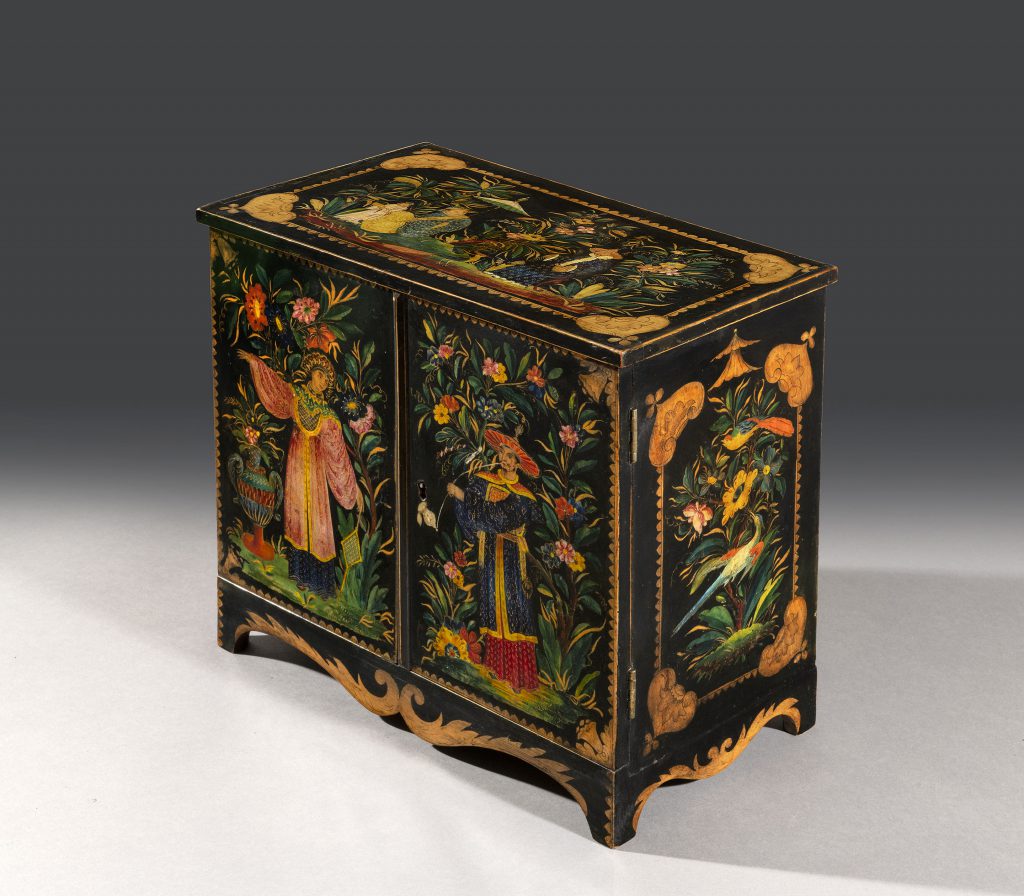
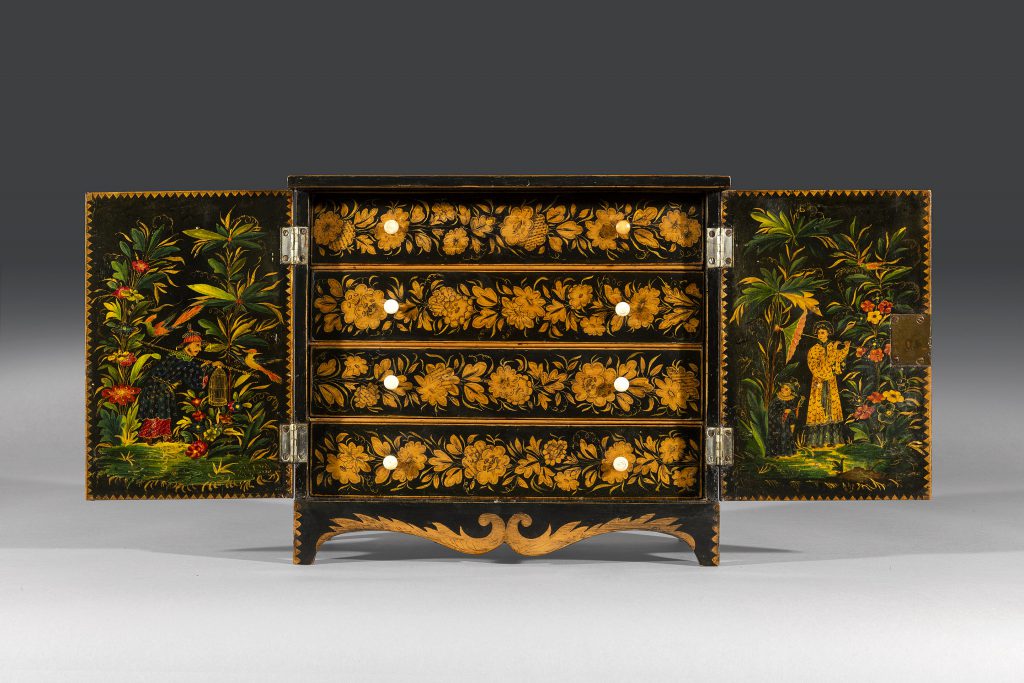
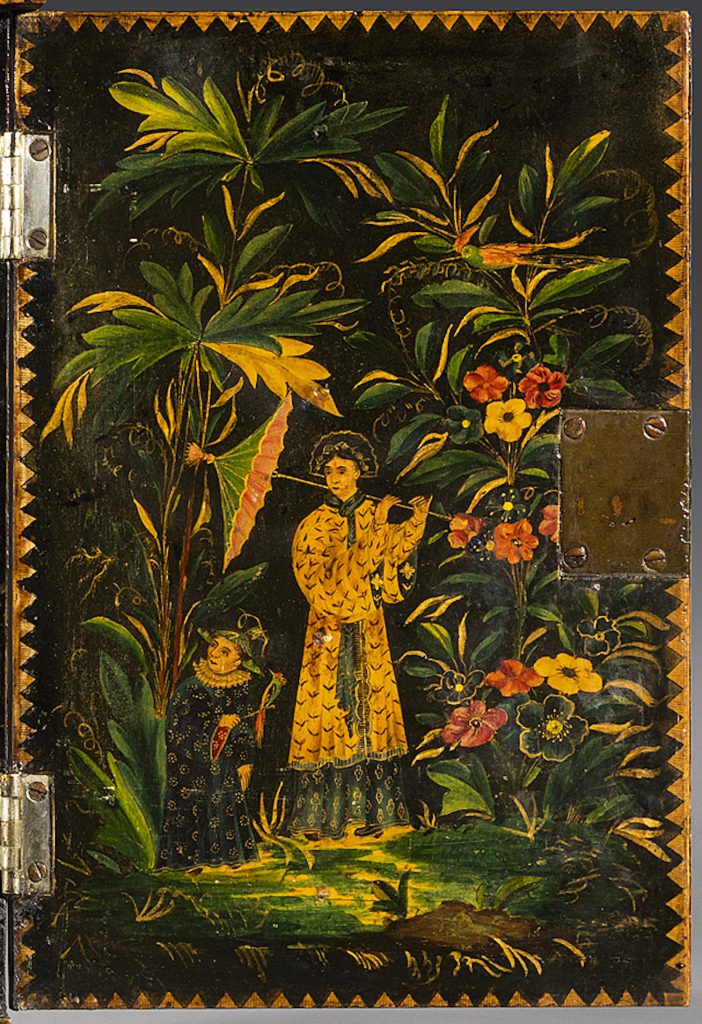
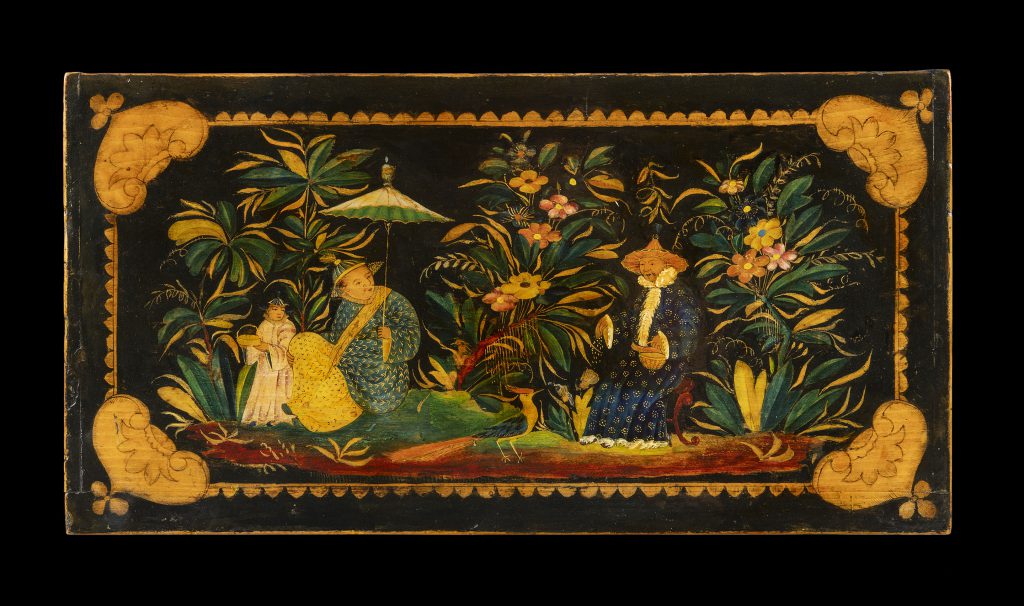
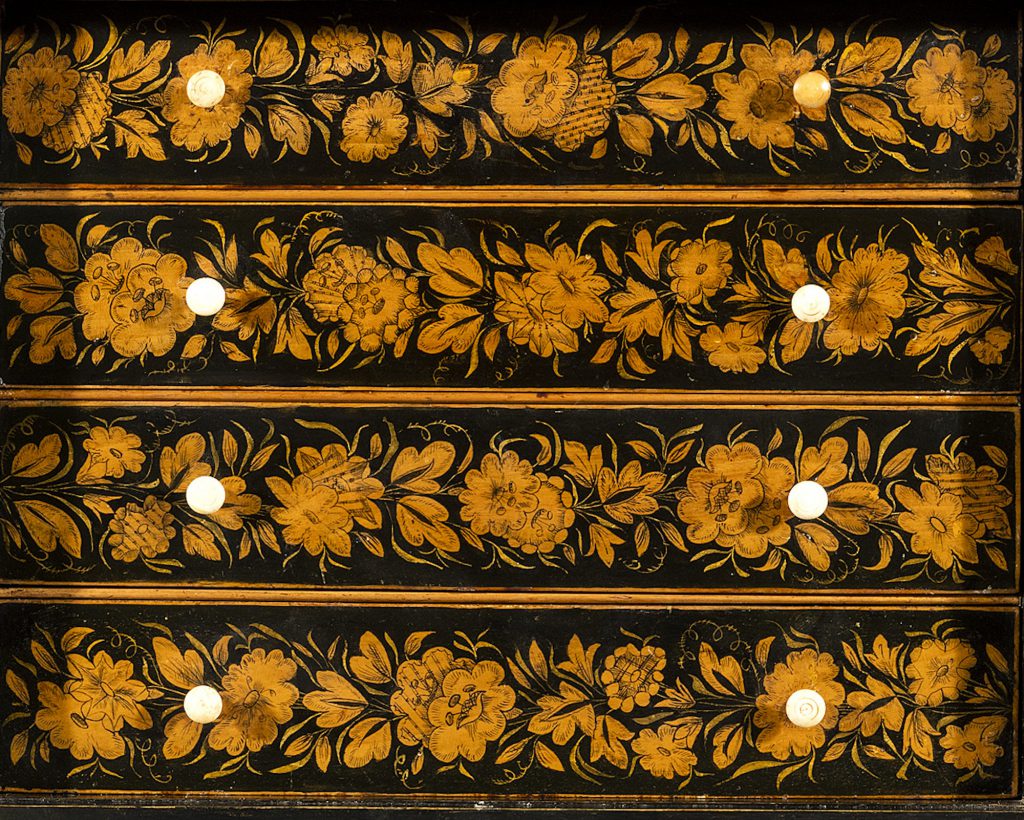
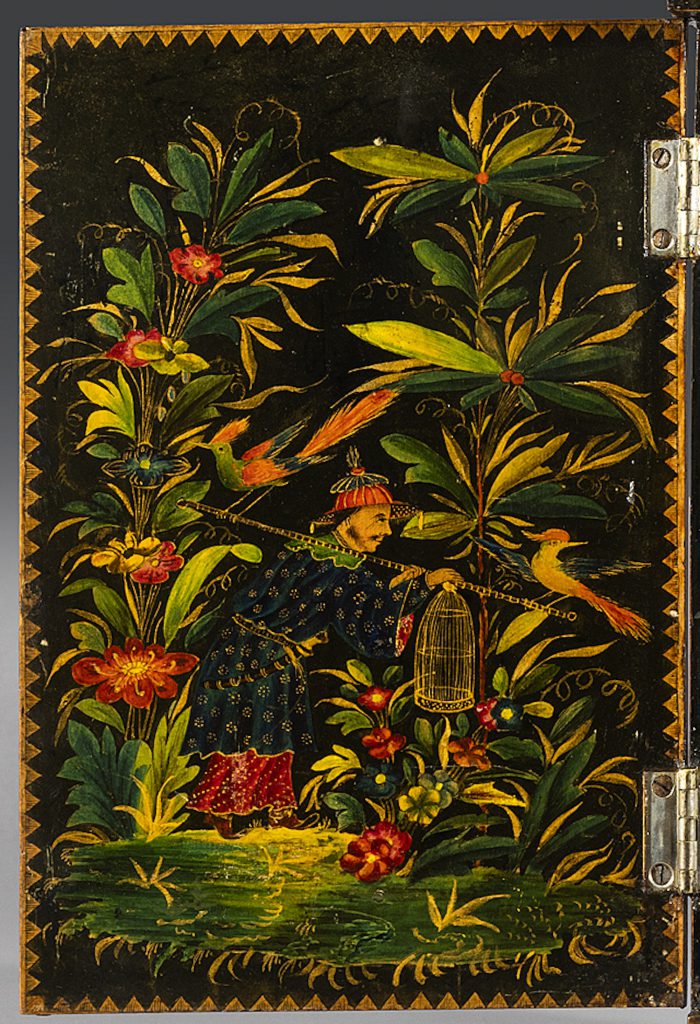
Regency Chinoiserie Table Cabinet
England
circa 1820 - 1830
Beautifully decorated Regency chinoiserie table cabinet.
The rectangular top sits above a pair of doors, each decorated with ebonised ground and polychrome chinoiserie scenes of figures in gardens, above a sweeping plinth base.
The sides are exquisitely decorated with birds of paradise perched on the rod supporting their birdcage.
The interior contains four drawers decorated with floral penwork designs and ivory turned handles and the inner doors are decorated with ebonised ground and polychrome chinoiserie scenes of figures in gardens.
The cabinet to which we refer and rely on for attribution is Lot 55, Christies London, Important English Furniture, 27th November 2003.
'A GEORGE IV SIMULATED-ROSEWOOD AND PAINTED CABINET-ON-STAND'
By tradition made by Mr. Wimpear in the employment of Mr. Loudon, December 6th 1821.
Decorated overall with scrolling foliage simulating inlaid ivory, the canted rectangular top above a pair of doors each decorated on an ebonised ground with polychrome chinoiserie scenes of figures in gardens, the interior with twelve variously-sized drawers decorated with scenes of the Clifton region alternating with flowers, around a central fielded panelled door decorated on an ebonised ground with a chinoiserie courtier smoking, the stand with inset frieze and on square tapering legs joined by a platform undertier, on bun feet, the frieze of the stand with structural restorations, the reverse of the inner door reputedly bearing a pencil inscription 'Made by George Wimpear in the employ of Mr Loudon, December 6th 1821', with pencil inscription beneath a drawer 'Aban... B. Martin Westbury'
Provenance
Anonymous sale, Sotheby's London, 15 November 1985, lot 136.
Anonymous sale, Christie's London, 9 July 1992, lot 85.
https://www.christies.com/lotfinder/lot/a-george-iv-simulated-rosewood-and-painted-cabinet-on-stand-4186497-details.aspx?from=searchresults&intObjectID=4186497&sid=94c856fb-2519-455f-bc30-f1c591612350
Condition
Excellent
Literature
The table cabinet belongs to a small group of similarly exquisitely decorated pieces that can be attributed to George Wimpear. One of these pieces is illustrated in Marked London Furniture 1700-1840 and described as “a magnificent cabinet on stand with polychrome penwork decoration in the Chinese taste. It is inscribed in pencil ‘Made by George Wimpear in the employ of Mr Loudon, December 16th 1821’ (figure 1). It is not known whether Mr. Loudon was a master and George Wimpear a journeyman, or whether the former was a patron. The interior of the signed piece is decorated with scenes around Clifton, Bristol, and may have been executed there.
A much larger cabinet, formerly in the collection of Maurice ‘Dick’ Turpin sold by Christie’s (9 March 2006, Lot 300) employs the same decorative schemes and even replicates one of the vignettes from the inside right hand door of the present cabinet (figure 2). A further, small table cabinet in penwork, with a related canted top and decoration was sold in the American art trade in 2014 (figure 3). The table cabinet includes a vignette also found on the Turpin cabinet, further supporting the attribution of this group to the same hand.
Chinoiserie decoration on furniture very much reflects the Regency taste for the exotic and was encouraged by the extravagance taste of the Prince of Wales, later George IV, who executed a small number of royal interiors in this taste, beginning with the lavish Chinese drawing room created in 1790 at the Prince’s London residence, Carlton House and reaching its apogee in the magical fantasy of Indian and Chinese taste of the Royal Pavilion at Brighton. The example of the Regent, and the group of culturally sophisticated aristocrats that surrounded him, meant that the use of lacquer became a prominent part of repertory of materials and forms available to the most fashionable furniture makers of the early 18th Century London.
Dimensions
Height 28.50cm (11.22 inches)
Width 32.00cm (12.6 inches)
Depth 17.00cm (6.69 inches)
Stock No: 19001
Sold
